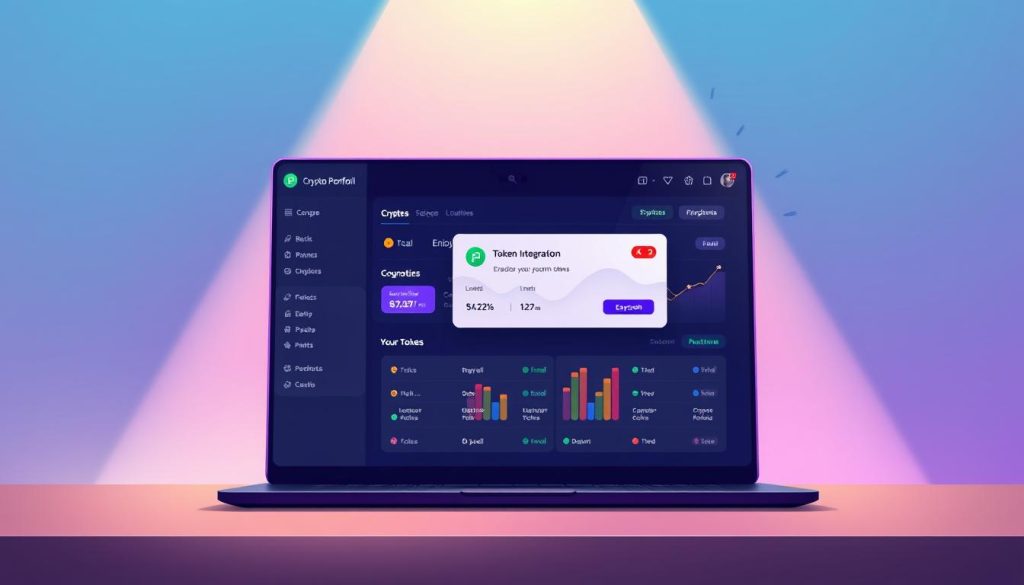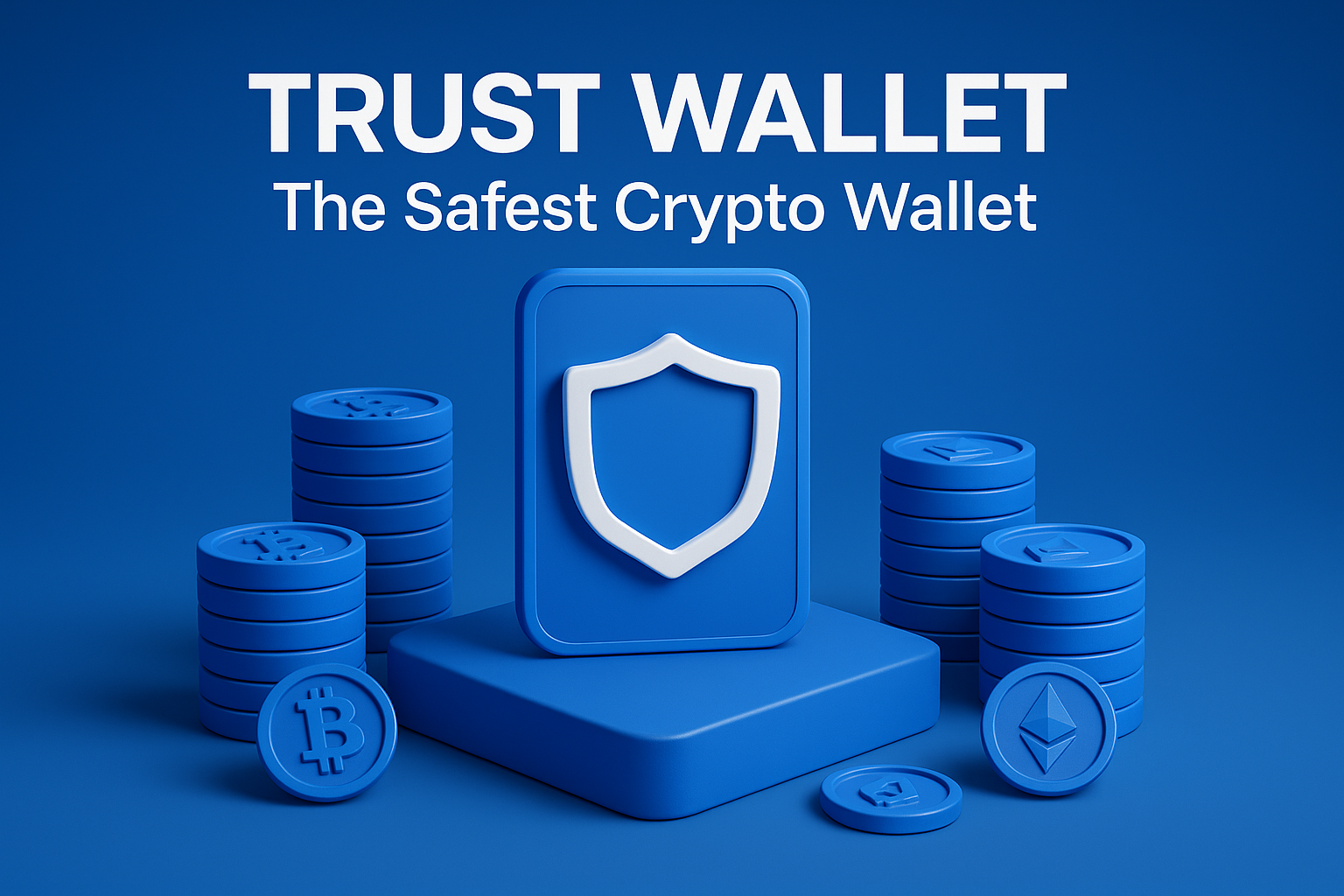Managing digital assets securely is a top priority for crypto enthusiasts. With rising cyber threats, choosing the right platform matters. One solution stands out for its robust protection and versatility.
Trust Wallet empowers over 200 million users globally to store, trade, and interact with crypto safely. Its self-custody design ensures individuals retain full control of private keys, encrypted directly on their devices. This approach eliminates third-party risks, aligning with decentralized principles.
The platform supports 100+ blockchains, offering access to 10 million+ tokens, NFTs, and Web3 apps. Whether trading Bitcoin, Ethereum, or exploring DeFi protocols, users enjoy seamless cross-chain functionality. Independent audits by CertiK and CER confirm its reliability, with top-tier security ratings of AA and AAA.
Key Takeaways
- Self-custody model ensures users control private keys with AES encryption.
- Supports 100+ blockchains and 10 million+ digital assets, including NFTs.
- Rated AA by CertiK Skynet and AAA by CER for security.
- No personal data collection or third-party fund access.
- Integrates with DeFi platforms, NFT marketplaces, and Web3 ecosystems.
Introduction to Trust Wallet
Cryptocurrency management demands both simplicity for newcomers and depth for experts. This platform bridges the gap by offering intuitive tools alongside advanced Web3 capabilities, setting a new standard for accessibility in decentralized finance.
Overview of the Platform and Market Position
As a top contender in the crypto space, this solution competes directly with MetaMask and Exodus. Backed by Binance, it combines institutional-grade security with continuous innovation. Partnerships with payment systems like Coinbase Pay streamline crypto purchases, removing barriers for first-time users.
Key Benefits for Crypto Users
Beginners appreciate the clean interface for storing digital assets, while veterans leverage custom RPC nodes and multi-chain dApp interactions. The built-in tax calculator automatically tracks gains and losses—a feature most rivals don’t provide.
Smart network detection in the dApp browser prevents costly transaction errors. Unlike custodial services, the self-custody model guarantees full control over holdings. Every action remains private, with no personal data collection or third-party access.
Features and Security of Trust Wallet
The cornerstone of any crypto solution lies in its ability to adapt to diverse networks while protecting user assets. This platform delivers both through cutting-edge architecture and encryption protocols, enabling users to manage digital wealth across ecosystems securely.

Multi-Chain Support and NFT Integration
With compatibility for 100+ blockchain networks, the service eliminates the need for multiple apps. Users access Bitcoin, Ethereum, and emerging chains like Avalanche through a single interface. Native NFT displays for Ethereum and BNB Chain collectibles simplify portfolio tracking without third-party tools.
| Blockchain | Supported Assets | NFT Compatibility |
|---|---|---|
| Ethereum | ERC-20, ERC-721 | Full Support |
| BNB Chain | BEP-20, BEP-721 | Native Display |
| Polygon | MATIC, PRC-20 | Cross-Chain Viewing |
Advanced Security Measures and Private Keys Control
Military-grade AES encryption shields private keys directly on devices. Funds remain inaccessible to external parties, including the platform itself. Three-layer verification combines biometric scans, PIN codes, and encrypted seed phrases.
Unlike custodial alternatives, the non-custodial structure ensures users exclusively control their crypto. No personal information gets collected, maintaining complete anonymity during transactions. Automatic network detection in the dApp browser further prevents costly transfer errors.
Using Trust Wallet for Full Control of Digital Assets
Empowering users to maximize their digital wealth securely requires tools that balance simplicity with advanced capabilities. This platform delivers both through innovative features that streamline portfolio growth while maintaining user sovereignty.
Seamless Asset Management and In-App Token Swaps
The interface simplifies tracking holdings across 100+ networks. Users view Bitcoin balances alongside NFTs and DeFi positions in one dashboard. Built-in swapping uses decentralized protocols to exchange tokens instantly—no external exchanges needed.
Key advantages:
- Trade 10 million+ digital assets without leaving the app
- Real-time price charts for informed decisions
- Custom token additions for niche investments
Stablecoin Earn and Additional Functionalities
Daily rewards on USDT, USDC, and other stablecoins through on-chain protocols let funds grow passively. Withdrawals happen instantly, preserving liquidity while earning.
| Stablecoin | Protocol | Reward Frequency | Withdrawal Policy |
|---|---|---|---|
| USDT | Transparent yield | Daily | Instant |
| DAI | Decentralized | Hourly | No delays |
| USDA | On-chain | Real-time | 24/7 access |
DeFi integrations enable yield farming directly from the interface. Portfolio analytics track performance across chains, while transaction histories remain encrypted locally. Users retain complete authority over their crypto journey.
Adding Custom Tokens to Enhance Your Portfolio
Expanding your cryptocurrency portfolio requires flexibility to explore emerging tokens. This feature unlocks access to niche projects while maintaining security standards. Follow these guidelines to integrate unique assets seamlessly.

Step-by-Step Guide to Adding Custom Tokens
Begin by opening the application or browser extension. Locate the “+” button on the main interface—this initiates the process. Follow these steps:
- Select the blockchain network matching the token’s origin
- Input the contract address from official sources
- Confirm token name, symbol, and decimal places
- Click “Import” to add to your asset list
Browser users must first navigate to “Manage crypto” at the screen’s bottom. Cross-chain compatibility prevents errors—choosing Ethereum for ERC-20 tokens or BNB Chain for BEP-20 assets ensures smooth integration.
Best Practices for Verifying Token Details
Always validate contract addresses through three sources: project websites, blockchain explorers, and community channels. Scammers often create fake tokens with identical names.
- Check Etherscan for Ethereum-based assets
- Use BscScan for BNB Chain tokens
- Compare social media announcements with contract data
“Token verification separates savvy investors from potential victims. Never skip due diligence.”
Decimal mismatches can distort balances—confirm this detail matches the project’s whitepaper. Enable transaction previews to catch errors before finalizing additions.
User Experience and Mobile App Benefits
Navigating crypto management becomes effortless with a design focused on clarity and accessibility. The platform balances advanced functionality with straightforward controls, ensuring smooth interactions across devices.
Interface Design and Ease of Navigation
The mobile app features a minimalist layout with color-coded tabs for quick access. Large buttons and readable fonts simplify actions like swapping tokens or checking balances. Critical functions—portfolio tracking, dApp browsing, and NFT displays—are organized into distinct sections.
Biometric login options streamline security without sacrificing speed. Users receive instant push alerts for completed transactions, eliminating manual checks. Customizable dashboards let traders prioritize their most-used tools.
Cross-Platform Functionality
Sync portfolios seamlessly between smartphones and desktops using encrypted backups. Start a transaction on Android and finalize it via Chrome—all data updates in real time. Browser extensions maintain identical features to mobile versions, including DeFi integrations.
| Platform | Key Features | Sync Capability |
|---|---|---|
| iOS/Android | Touch ID, instant alerts | Full |
| Chrome/Brave | dApp access, swaps | Partial |
| Edge/Opera | NFT management | Full |
Offline mode preserves basic functions like viewing holdings when connectivity drops. Developers optimize updates across all platforms simultaneously, ensuring uniform performance.
Comparative Analysis: Trust Wallet Among Crypto Wallets
Choosing the right crypto storage solution requires balancing security, features, and accessibility. This evaluation examines how leading options stack up in critical areas.
Security and Asset Support Comparison
Trust Wallet leads mobile solutions with a CertiK Skynet Score of 91.12 (AA) and CER’s AAA rating—higher than Exodus and Zengo. Its non-custodial framework keeps keys encrypted on devices, unlike web-based rivals like MetaMask. Support for 100+ networks and 10 million+ assets dwarfs Sparrow’s bitcoin-only approach.
Hardware options like Trezor provide air-gapped security but lack multi-chain flexibility. BlueWallet excels for BTC management yet misses DeFi integrations. Only this platform combines military-grade protection with Web3 versatility.
Cost-Effectiveness and User Ratings
No subscription fees undercut paid services like Ledger Live. Swaps use decentralized rates, often cheaper than centralized exchanges. User reviews praise the intuitive design, contrasting with complex interfaces from full-node wallets.
While Sparrow appeals to BTC purists and Zengo simplifies onboarding, Trust Wallet delivers unmatched breadth. Daily stablecoin earnings and NFT management add value absent in basic bitcoin wallets. Continuous updates keep it ahead in functionality per dollar spent.
FAQ
How does Trust Wallet ensure the safety of digital assets?
Advanced security protocols, including user-controlled private keys and encrypted storage, protect holdings. Full ownership remains with the user, and transactions require direct authorization from their device.
Can users manage NFTs and multiple blockchains in one place?
Yes. The platform supports multi-chain networks and NFT integration, enabling seamless interaction with diverse digital collectibles and cryptocurrencies across ecosystems.
What steps are needed to add custom tokens?
Navigate to the wallet section, select “Add Custom Token,” and enter the contract address. Always verify token details through blockchain explorers like Etherscan before confirming.
Are in-app swaps available without third-party platforms?
The built-in decentralized exchange allows direct token swaps across supported networks. This eliminates reliance on external trading platforms for most transactions.
How does the mobile app enhance crypto management?
Its intuitive design simplifies portfolio tracking, staking, and swaps. Cross-platform functionality syncs with browser extensions, ensuring access via mobile or desktop.
What makes this solution cost-effective compared to others?
No mandatory fees for storage or transactions. Users only pay blockchain network gas fees, making it ideal for frequent traders and long-term holders alike.

Leave a Reply